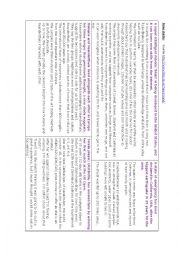
|
4 short news stories from BBC Newsround + questions
4 short news stories.
Task 1: match the headlines and pictures to the stories - this requires pupils to read quickly for key words only.
Task 2: answer the "w" questions about each story (who/what/when etc.) - this requires pupils to summarise and to show they can read for gist.
Task 3: answer the mixed questions (answers provided in key) - this...
Level: intermediate
Age: 10-100
Type: worksheet
Downloads: 68
|
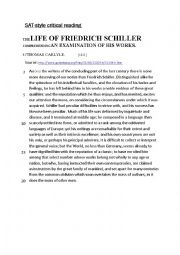
|
SAT-style critical reading / reading comprehension on Schiller
SAT-style critical reading test on Schiller. Covers reading comprehension and high-level vocabulary. Answers and text included.
Level: advanced
Age: 15-100
Type: reading
Downloads: 22
|
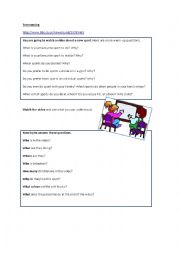
|
Freerunning (parkour) - short video and questions
A short video about children learning freerunning in their school gym class.
Exercises are: pre-video discussion questions, watch and answer "w" questions, watch and answer detailed questions (e.g. gap fill).
Level: intermediate
Age: 8-100
Type: worksheet
Downloads: 15
|
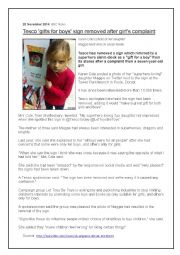
|
"Let Toys be Toys": BBC News article about gendered toys
Something �serious� in the run-up to Christmas: Article about a girl who was angry to see signs promoting "boys� toys" in her local supermarket. Vocabulary and comprehension exercises followed by discussion questions and role plays about gendered toys and toy advertising. Answer key provided.
Level: intermediate
Age: 12-100
Type: reading
Downloads: 54
|
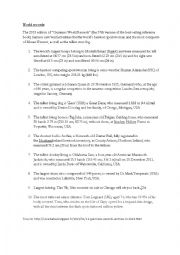
|
World records: superlatives
Pupils match the pictures to the world record and then deduce the rules for forming superlatives by analysing the sentences.
Level: intermediate
Age: 8-17
Type: worksheet
Downloads: 8
|
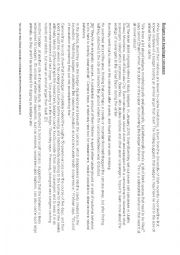
|
Badgers: ACT or SAT reading comprehension
Reading passage in the style of the ACT and SAT reading tests. Used to help prepare a student for these tests.
Level: advanced
Age: 14-100
Type: reading
Downloads: 20
|
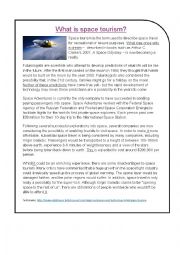
|
Reading skills: space tourism
Text about space tourism with exercises designed to improve reading skills: identifying what pronouns refer to, finding definitions in the text, considering the significance of tenses. Final exercise requires readers to answer classic comprehension questions having completed the warm-up exercises. 2 writing tasks are also suggested. Answers provide...
Level: advanced
Age: 10-100
Type: reading
Downloads: 142
|
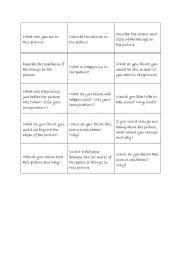
|
Picture discussion prompts
A set of questions to use with any picture (from magazines or newspapers, or your own photos). Each question is open and designed to promote either detailed description or creative thinking.
Print the document out DOUBLE-SIDED - the second page gives useful vocab and structures to support pupils with each question.
Level: intermediate
Age: 10-100
Type: others
Downloads: 22
|
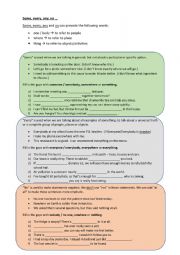
|
every- some- no- any- words overview and exercises
An overview of how the prefixes EVERY, SOME, NO and ANY combine with ONE/BODY, THING and WHERE.
Each prefix is discussed separately, with a guided gap-fill exercise each time.
The final exercise asks students to do a mixed gap-fill as a plenary/conclusion activity.
Level: intermediate
Age: 10-100
Type:
Downloads: 41
|
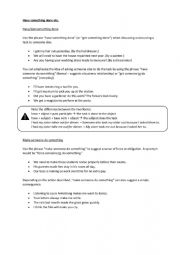
|
Causative form: have/get something done, make someone do something etc.
An overview of the following structures:
have/get something done - have someone do something - get someone to do something - make someone do something
There are clear explanations of the structures and the subtle differences in meaning between them, followed by two authentic texts and exercises (open-ended questions as well as grammar gap-fill se...
Level: advanced
Age: 11-100
Type: grammar-guide
Downloads: 29
|